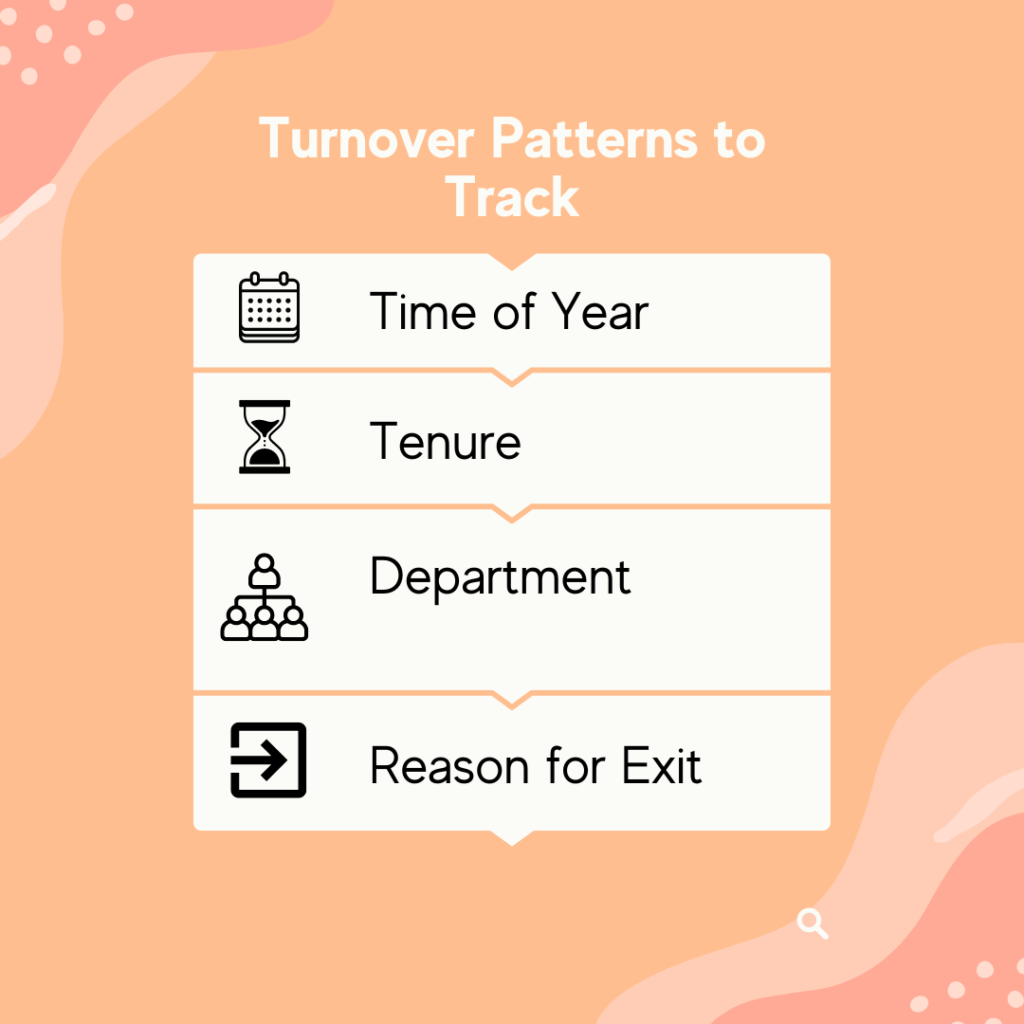Employee turnover is an issue faced by many organizations. It refers to the loss of employees from an organization. High turnover rates can lead to negative impact on the organization such as increased recruitment costs, lower productivity, and decreased morale among remaining employees and so forth. That’s why it is vital for organizations to pinpoint the patterns and causes of employee turnover and adopt appropriate measures to reduce it.
Why Look for Patterns?
Understanding the patterns can help organizations recognize the root causes of the problem and take appropriate action timely. For example, if employee turnover is higher in a particular department, it could indicate a specific problem in that department, such as mismanagement or a toxic work culture. By recognizing these patterns, organizations can take targeted measures to resolve the root causes and minimize turnover rates.
Types of Turnover: Voluntary and Involuntary Turnovers
Employee turnover can be classified into two main types: voluntary and involuntary. Voluntary turnover refers to the situation when an employee leaves the organization of their own will, such as resigning or retiring. While Involuntary turnover refers to when an employee is terminated by the organization, such as for violating code of conduct or because of a reduction in force.
Whatever may be the case, organizations need to be aware of both types of turnover to understand the causes and develop pertinent solutions.
Solutions to Reduce Employee Turnover

There are several solutions that organizations can implement to reduce employee turnover rates. Some of the most effective solutions include:
1. Improving Compensation and Benefits: Organizations should regularly review and update their compensation and benefits packages to ensure they remain competitive.
2. Offering Professional Development Opportunities: This can include providing training and education programs, as well as opportunities for growth and advancement within the organization.
3. Improving Work-Life Balance: This can include offering flexible work schedules, telecommuting options, and other benefits that help employees manage their work and personal responsibilities.
4. Enhancing Company Culture: This can include creating a supportive work environment, encouraging teamwork and collaboration, and promoting open and effective communication.
5. Conducting Employee Surveys: Conducting regular employee surveys can help organizations understand the issues and concerns of their employees.
Turnover Patterns to Track

1. Time of Year: Tracking turnover rates by month or quarter can help organizations identify seasonal patterns, such as an increase in turnover during winter months or before the holiday season.
2. Tenure: Tracking turnover by length of employment can help organizations understand which employees are most likely to leave, such as those with short or long tenures.
3. Department: Tracking turnover by department can help organizations identify areas that may require improvement, such as a high turnover rate in the IT department of an organization may be an indicator of poor team leadership.
4. Reason for Exit: This can include tracking the reasons for voluntary and involuntary turnover, such as poor compensation or performance issues.
Conclusion
By tracking these turnover patterns, organizations can gain valuable insights into the causes of employee turnover and take targeted measures to reduce it and improve overall employee satisfaction and retention.





Leave a Reply